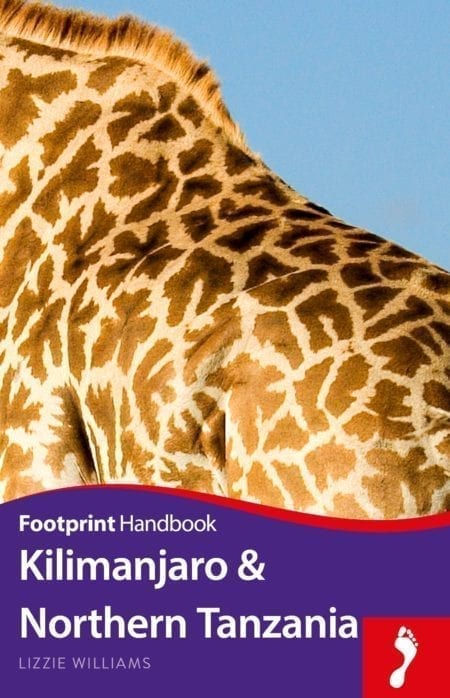The annual migration of at least two million ungulates – predominantly wildebeest but also large concentrations of zebra and lesser numbers of Thomson’s gazelle, Grant’s gazelle and eland – through the greater Serengeti ecosystem is the greatest spectacle of its type in Africa.
Dictated by local rainfall patterns, the Serengeti migration does follow a reasonably predictable annual cycle, although there is also a fair amount of variation from one year to the next, dependent mainly on the precise timing of the rainy seasons. The cycle breaks up into the following main periods:
December–April
The plains that stretch southeast from Seronera into the Ngorongoro Conservation Area form the Serengeti’s main wildebeest calving grounds, centred on the Ndutu area of the NCA–Serengeti border. The wildebeest typically disperse into this area during the short rains, which fall in late November or early December, and stay put until the end of the long rains, generally in early May.
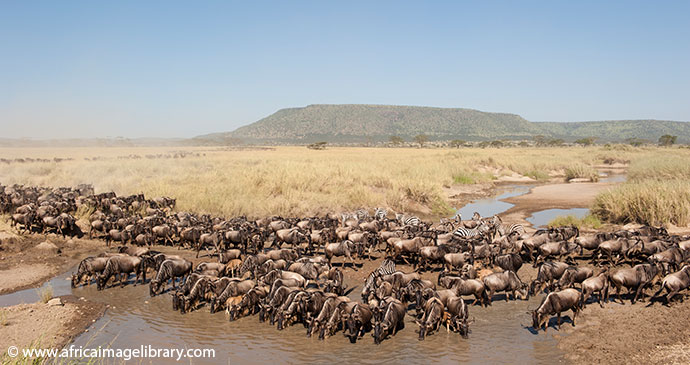
These southeastern plains are the most accessible part of the park, particularly for those on a budget safari, and this is a fantastic time to be on safari in the Serengeti thanks to the lush green scenery. The optimum time to visit this area is the peak calving season (usually centred on February) when hundreds, even thousands, of calves are dropped daily, and predator concentrations are also at their peak. In March and April, you won’t see the migration itself, but it’s not uncommon to encounter herds of 10,000-plus animals on the move, following the rain to greener pastures.
May–July
Usually towards the end of April, the wildebeest and their entourage start to congregate on the southern plains in preparation for the 800km northward migration. The actual migration, regularly delayed in recent years due to late rain, might start any time from late April to early June, with a herd of more than a million migrating animals marching in a braying column of up to 40km long, one of the most impressive spectacles in the world.
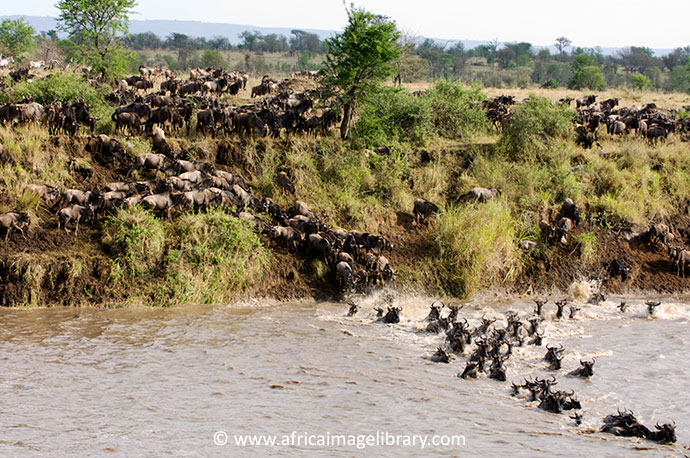
The major obstacle faced by the wildebeest on this migration is the crossing of the Grumeti River through the Western Corridor, which typically occurs from June into early July. A great many animals die in the crossing, many of them taken by the Grumeti’s ravenous and prolific population of outsized crocodiles, and the fi rst herds to cross are generally at the greatest risk. For this reason, it can take up to two weeks from when the first wildebeest arrive at the southern bank of the river for the actual crossing to begin, by which time thousands upon thousands of wildebeest are congregated in the Western Corridor.
August–November
Following the great northward sweep across the Grumeti, the ungulates usually cross the Mara River in August, before dispersing across the plains of the northwest. Conventional wisdom has it that August–October is a bad time to visit the Serengeti, because the wildebeest have crossed the Kenyan border into the Maasai Mara National Reserve. In reality, however, about half of the wildebeest stay in the northwest Serengeti over these months, and game viewing can be excellent, assuming that you can afford to base yourself at one of the exclusive tented camps in the Mara River area.
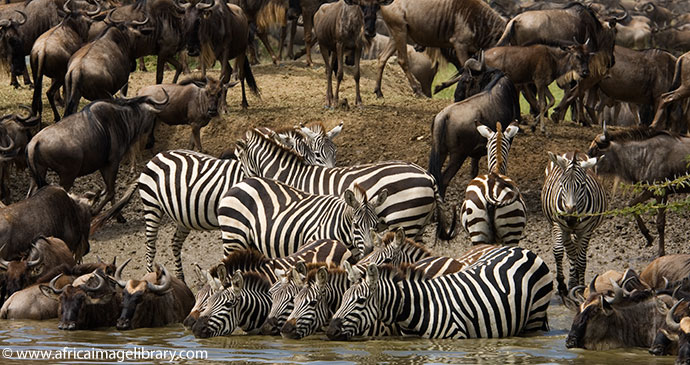
Here, relatively small herds of wildebeest – typically between 500 and a few thousand – frequently travel back and forth between the northern and southern banks of the Mara River in response to changes in the local rainfall pattern, a truly spectacular event. In October, sometimes earlier, the animals generally cross the Mara River one last time and start to plod back southward to the short-grass plains of the southeast, and there is a good chance of catching the southward migration in the Lobo area between late October and mid November. The wildebeest usually reach the shortgrass plains around Ndutu in late November, when the cycle starts all over again.
When should you visit?
Whether it is worth planning your safari dates around the migration is a matter of choice. With the best will in the world, it would be practically impossible to ensure that a few days in the Serengeti will coincide with the exact date of a river crossing, which is the most spectacular event in the migration calendar. On the other hand, if you choose the right part of the Serengeti – the southeast from December–May, the Western Corridor from May–July, the Mara River area from July–October, and the Lobo area from October–November – large herds of grazers should be easy enough to locate and there’s a fair chance of witnessing a more spectacular migrational movement or river crossing.
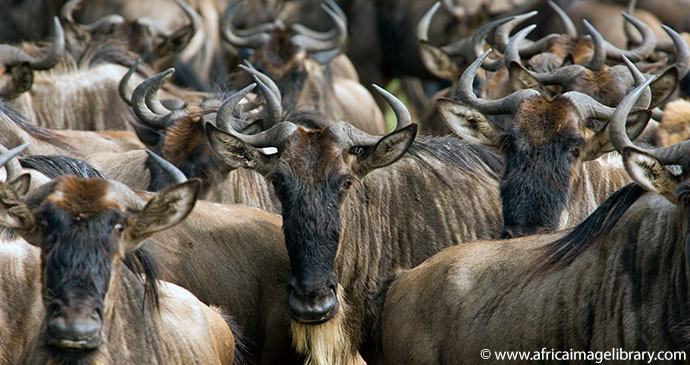
On the other hand, bearing in mind that most predators and ungulate species other than zebra and wildebeest are strongly territorial and do not stray far from their core territory over the course of any given year, there is a lot to be said for avoiding the migration. Most lodges and camps now charge substantially lower rates during April and May, with a knock-on effect on the rates offered by safari companies that suddenly become hungry for business. Furthermore, the safari circuit as a whole is far less crowded outside of peak seasons, and in our experience the Serengeti, irrespective of season, will still offer game viewing to equal that of any game reserve in Africa.
The spectacle and wonder of the Serengeti’s Great Migration has secured it a spot on our Top 10 Best African Safaris. To see what else made the list, be sure to check out the full article.
Read more about Tanzania’s amazing wildlife-viewing opportunities in our comprehensive safari guide:
